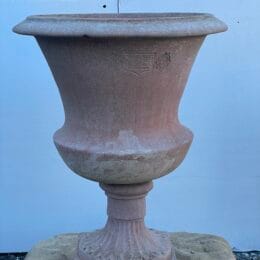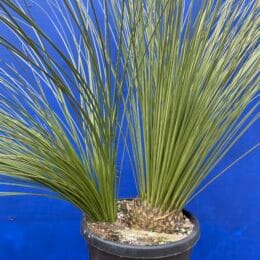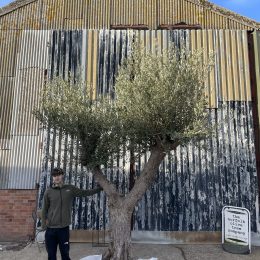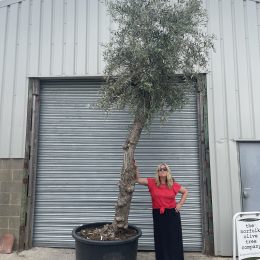- What is a Jubaea chilensis? Jubaea chilensis, also known as the Chilean Wine Palm, Coquito Palm or Honey Palm, is a slow-growing, cold-hardy palm with a striking architectural form.
- Can the Jubaea chilensis survive UK winters? Yes, mature specimens are remarkably hardy and tolerate temperatures as low as -12°C once established.
- Is the Chilean Wine Palm suitable for small gardens? Due to its eventual size, it is best suited to large gardens, estates or open landscaped spaces.
The Palm Tree with Prestige
There are palm trees—and then there’s the Jubaea chilensis. Native to central Chile and revered for centuries, this tree carries an aura of nobility. With its commanding trunk and elegantly arching fronds, this large specimen—available now at The Norfolk Olive Tree Company—is more than a tree. It’s a legacy.
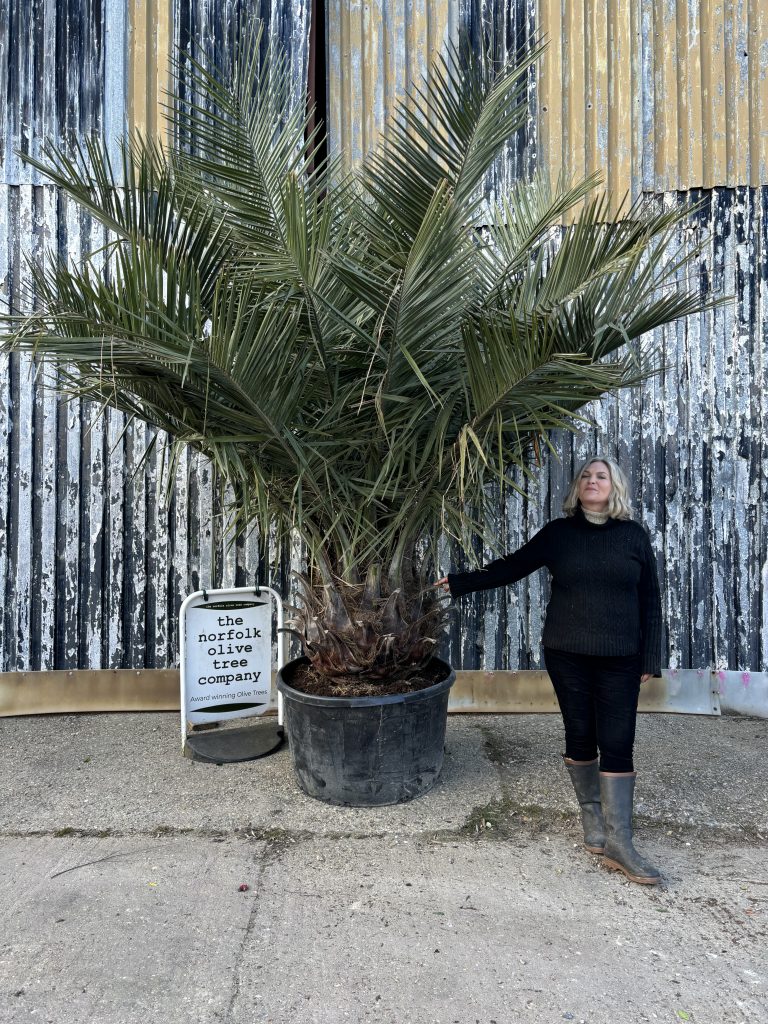
Meet the Chilean Wine Palm (Jubaea chilensis)
The Jubaea chilensis—known affectionately as the Chilean Wine Palm, Honey Palm or Coquito Palm—is one of the most extraordinary palm trees you can grow in the UK. In its native habitat, it can reach up to 25 metres, but in the UK climate, it grows more slowly, making it a manageable choice for those with space to make a bold statement.
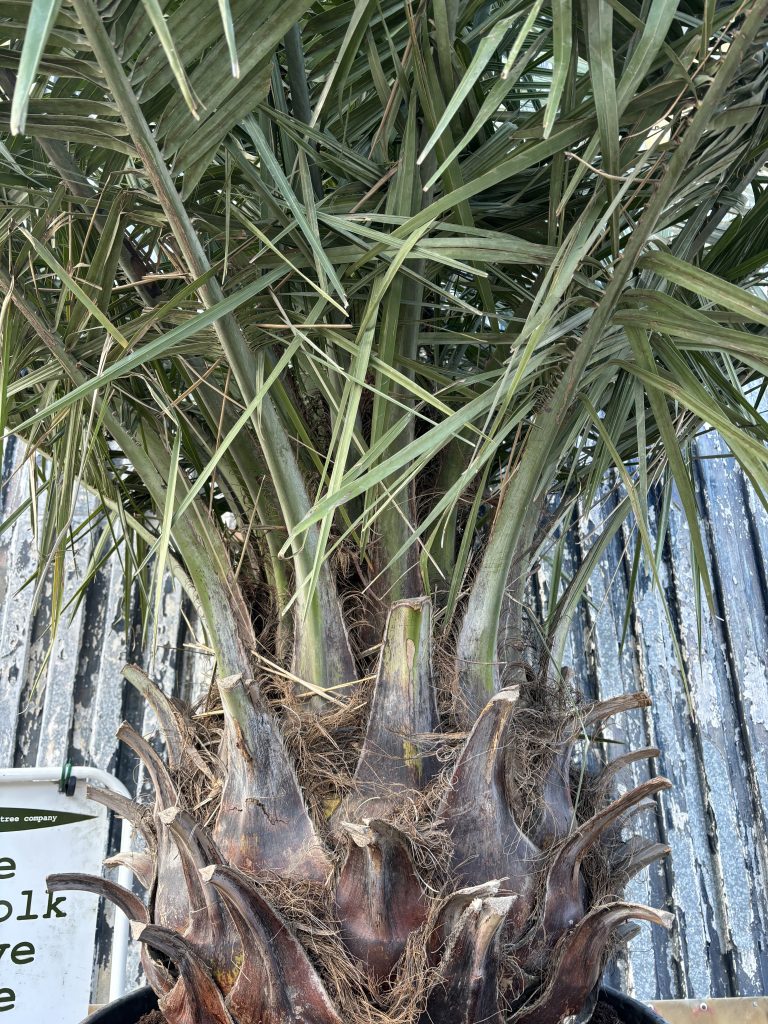
What sets it apart? Its dramatically thick, grey trunk and dense canopy of graceful fronds. Unlike faster-growing tropical palms, the Jubaea exudes timeless strength and permanence, making it a favourite among garden designers and collectors of architectural plants.
Styling Ideas: Create a Focal Point of Calm
Due to its size and sculptural beauty, this palm commands attention—use it as a standalone feature in a wide lawn, gravelled Mediterranean courtyard, or at the heart of a coastal garden.
Pair it with low-growing drought-tolerant plants such as lavender, agapanthus, or echinops to allow the trunk and fronds to remain the centrepiece. For drama, consider uplighting it at night to cast shadows and texture across your landscape.
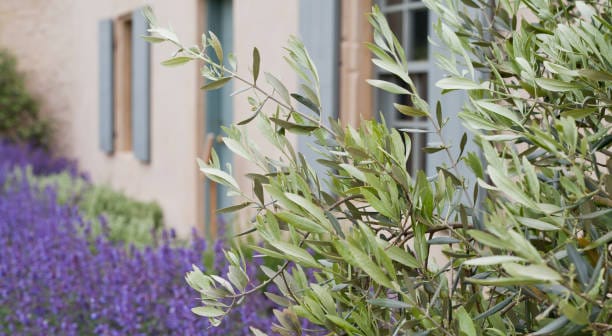
If you’re designing a modern garden, the symmetry and structure of the Jubaea chilensis adds instant luxury. Combine with architectural hardscaping—such as corten steel, slate, or rendered raised beds—for a contemporary look that balances soft planting with bold form.
Plant Management: Care for a Tree That Will Outlive You
Despite its exotic appearance, Jubaea chilensis is one of the hardiest palms available. It’s incredibly wind-resistant and tolerant of poor soils, as long as drainage is good.
Jubaea Chilensis- Care tips
- Position: Full sun; protect young plants from frost in their first year.
- Soil: Well-drained, loamy or sandy soil; avoid waterlogged conditions.
- Watering: Moderate; water well in dry summers, but avoid overwatering.
- Feeding: A slow-release palm fertiliser in spring will support healthy growth.
- Pruning: Remove old, brown fronds once fully dry. Never cut green fronds.
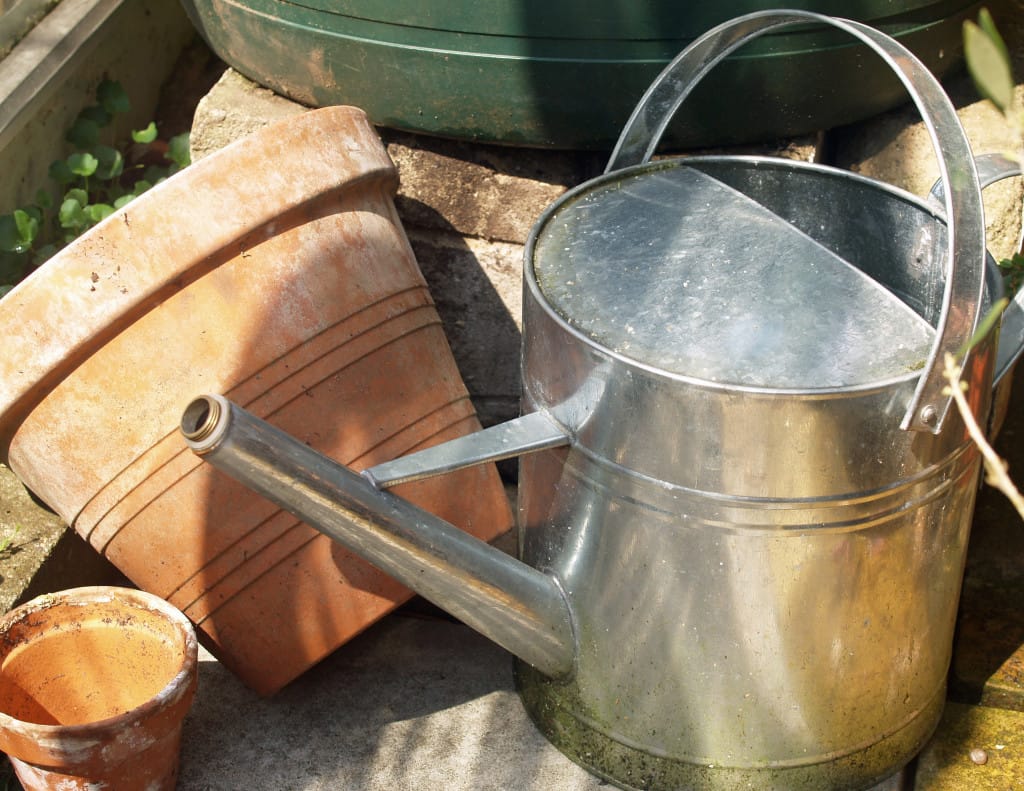
Because this is such a slow-growing tree, patience is rewarded. Over time, it becomes a show-stopping centrepiece and a real conversation starter.
A Tree with Heritage and Hope
Historically, the sap of Jubaea chilensis was used to produce palm wine—hence the name Chilean Wine Palm. While that practice has ceased to protect the species, its legacy lives on in gardens across the world. Choosing this tree is choosing something rare, enduring, and undeniably majestic.
Add This Icon of Grandeur to Your Garden Today
Ready to introduce rare botanical elegance to your garden? Our large specimen Jubaea chilensis is a once-in-a-decade find. Professionally nurtured and fully acclimatised to UK conditions, it’s ready to plant and transform your outdoor space.
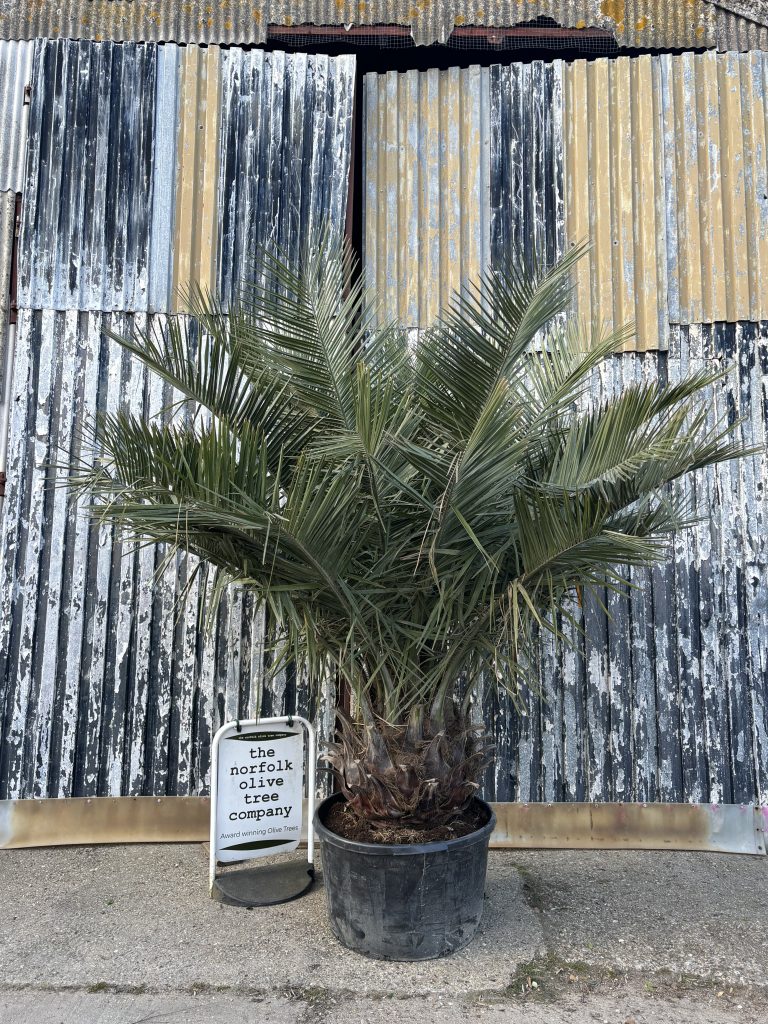
Order your Jubaea chilensis now or contact us for delivery and planting advice. Limited availability—don’t miss your chance to own a true garden icon.

